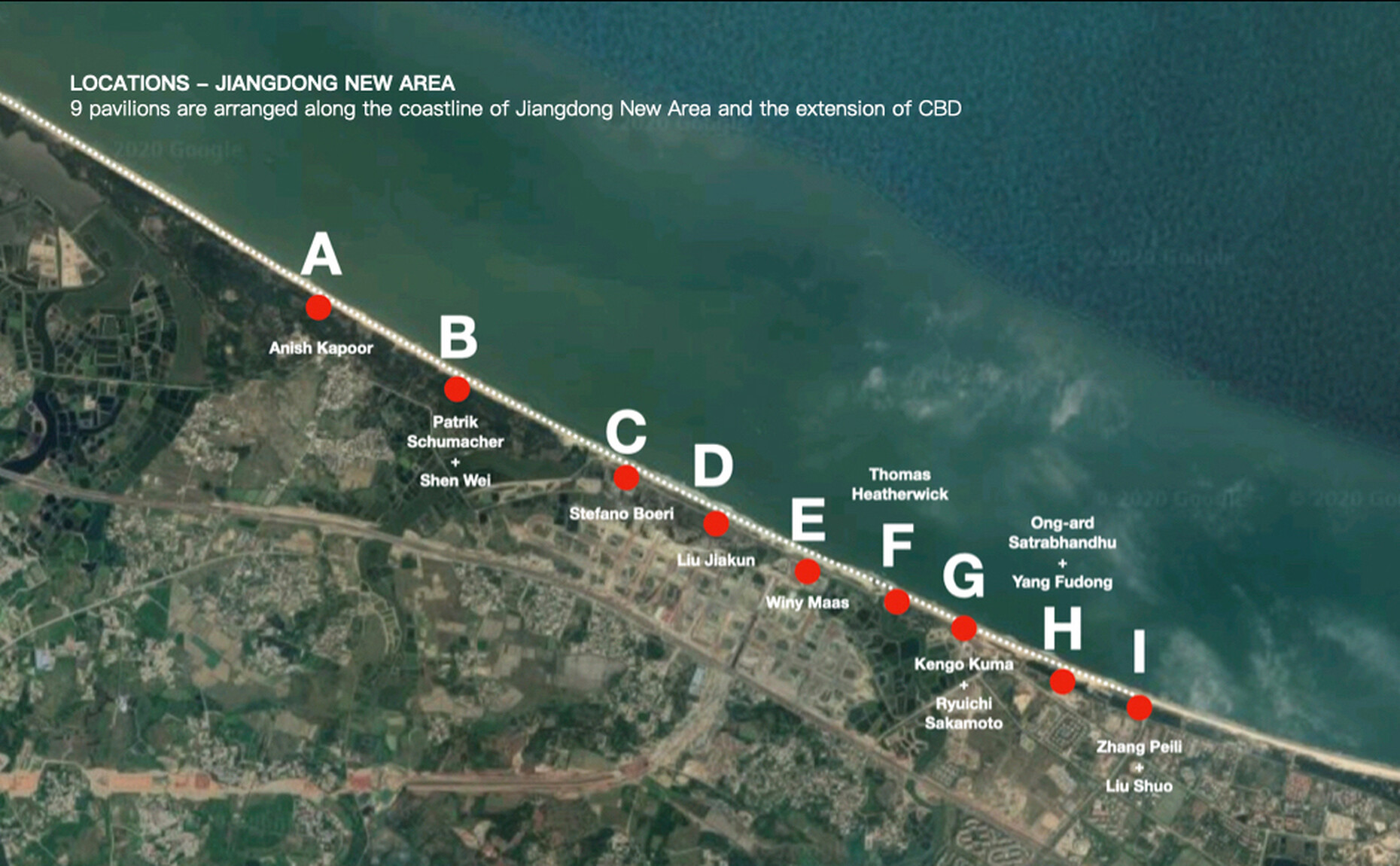Three questions to Weng Ling
Anna Moldenhauer: Ms Ling, what do you want to realise with the project "Pavilions by the Seaside"?
Weng Ling: Unlike traditional public art, Pavilions by the Seaside intends to integrate art, communication, education, and public utilities, inviting people to immerse themselves into nature, ultimately creating an emotional link between human, nature, and the built environment. These 16 pavilions will form a coastline of mobile cultural centres. The core of this project is its connection to the people. I hope that it will eventually be integrated into the daily life of Haikou residents, providing new cultural experiences to the residents of and tourists who come here to visit, or simply to explore as they leisurely walk by the seaside, adding to enrich their daily lives.
A number of international star architects are responsible for the architectural design of the pavilions, including Bjarke Ingels, Kengo Kuma, Winy Maas and Stefano Boeri. How did you manage to win these creative minds for the project?
Weng Ling: I think it's because we share a common vision. In 2014, I founded the "Arts China Union" and "Jade River Talk” as a platform for leading thinkers and creatives around the world to exchange ideas and collaborate. Many of them have become good friends as we all share a similar vision for the world, it’s what keeps us to coming together and collaborating over and over again. I feel very lucky that I have been surrounded by so many friends and intellectuals to exchange ideas earnestly. When I called on these friends and proposed the Haikou project, they all agreed to join without hesitation. I have learned a lot from them, and I am forever grateful to them.
You are a curator for Chinese contemporary art, what will be on display in the pavilions after completion?
Weng Ling: My work over the past two decades has revolved around the introduction of art into social, urban and environmental development, and my organisation Beijing Center for the Arts has been conducting research and development of urban renovation projects, that facilitates interdisciplinary cooperation across the fields of art, science, environmental protection, architecture and design. These pavilions will serve as a cultural corridor with ongoing programmes developed by Arts China Union. It will be an unprecedented platform that showcases interdisciplinary creative works, providing cultural content and experiences for the residents of Haikou and tourists with the aim to inspire a new way of living in the post-pandemic age.
















